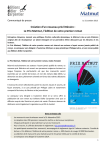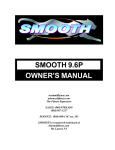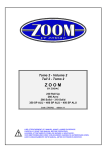Download Fair Winds, Blue Skies and Happy Holidays to All!
Transcript
December 2008 Newsletter of the Boeing Employees Flying Association 4 BEFA Newsletter 4 BEFA: Phone (425) 237-2332, M/S 94-35 840 West Perimeter Road, Renton, WA 98057-5346 Fair Winds, Blue Skies and Happy Holidays to All! close. I must say it has been an honor to represent such a unique organization, one that truly demonstrates it is possible to rely on teamwork, member participation, and members’ pride of ownership to accomplish its goals. Welcome New Members! Name Rebecca Neel Class III Location RNT New Solos! Name Richard Jones Jim Giannakis Date 10/15 11/16 I thought it might be fun, for newcomers and old-timers alike, to review what we have in fact accomplished together over the last four years. (The list of responsible people goes far beyond board members and Wes and our staff, including a great many other persons, too numerous to name here, who have simply chosen to step in and help in one way or another.) Instructor Veryioglou Olmstead Congratulations! Name Date Rating Instructor Kevin Creary 11/19 Private Yager Vijaya Meda 11/23 Private Lund/Demco __________________________________________ First of all, we managed to extricate ourselves from a longstanding lawsuit dealing with underground fuel storage tanks and contaminated soil. It certainly had the potential to end badly, but we were able to settle on reasonable terms and put it behind us. Coming Events Event • • • • • • • Time Date Location We have a much larger organization today than we had four years ago. The active membership has grown by a full 20%, and our fleet has kept pace, increasing from 19 to 23 airplanes. (That is why our staff, which has not increased, look 20% more harried than they used to!) TH RNT Aircraft Maintenance Team. 6-9pm (Contact Walt Cameron) TBD TBD RNT Bath and Bar-B-Que BEFA Holiday Potluck 2-6pm 12/19 RNT Board Meeting 5:00pm 12/19 RNT Instrument Ground School Eves. 2/9/09 RNT JeppView/FliteStar Class 5:30pm 1/9/09 RNT Private Pilot Ground 4:30pm 1/13/09 RNT School __________________________________________ Looking beyond the numbers, the make-up of our fleet has been upgraded significantly. Our core fleet of basic training airplanes now includes three late-model Cessna 172 Smodels, up from one four years ago. These are now our most popular airplanes. From Your President Frank Marshall The options for basic private and instrument training have been enhanced by the addition of a second C172 based at PAE, and an additional Piper Warrior based at RNT, creating an interchangeable pair at both locations. Election Results: Each year three persons are elected to fill three of the six board positions for a term of two years. This year’s election dealt with the positions of President, Secretary, and Operations Officer, and the winners were, respectively, Bob Ingersoll, Eric Lund, and Matt Smith (reelected to a second term). Congratulations to the winners, and thanks to all who allowed their names to be placed in nomination. For those interested in more capable airplanes, we have added a “glass cockpit” Cirrus SR-20, a second C182RG, and a CT210 Centurion. The latter is approved for flight into known icing, and with its turbocharger and built-in oxygen system, it can cruise in the flight levels at speeds up to about 190 KTAS. Four Years – Gone in a Flash: It’s hard to believe the four years I’ve had as your president are already coming to a Three of our airplanes now have WAAS-capable Garmin GNS 480 GPS’s, the Cirrus comes standard with two Garmin Page 1 of 9 December 2008 Newsletter of the Boeing Employees Flying Association 430 GPS’s, and the majority of the rest of our fleet has KLN 94 GPS’s. Over half of our airplanes bigger than the C150’s now are equipped with autopilots as well. Aircraft Base Rate Surcharge C150 $62.00 $9.63 C172 $75.00 $13.83 PA-28-151/161 $75.00 $13.83 C172SP $80.00 $15.58 Citabria $85.00 $13.83 PA-28R200 $99.00 $15.75 C182Q $102.00 $22.75 C182RG (68T) $110.00 $23.10 C182RG (65C) $125.00 $23.10 C172XP $130.00 $13.30 SR20 $133.00 $21.00 CT210 $169.00 $26.60 BE76 $169.00 $33.25 PCATD-M $15.00 PCATD-NM $20.00 We have also caught up with a lot of deferred maintenance on our Renton facility. We now have a fully functional furnace and air conditioning system, fully functional roofs over both the office and the hangar (freeing up the water-catching buckets for other uses), a nice external paint job for both buildings, a non-crumpled hangar door, and easily recognized striping in the parking lot. In addition we have a new closed-circuit security system, and we are in the process of providing BEFA ID cards for all members. (If you haven’t had a chance yet to stop by the Renton office to have your picture taken for this, please make arrangements with Diana to do so at your earliest convenience.) Thanks to some generous contributions from several members, we are also making great strides in completing the upstairs pilot’s lounge. Take a look when you get a chance – it’s going to be a very inviting room when it’s done. New Rate $71.63 $88.83 $88.83 $95.58 $98.83 $114.75 $124.75 $133.10 $148.10 $143.30 $154.00 $195.60 $202.25 $15.00 $20.00 (“M” and “NM” refer to members and non-members, respectively.) I wish everyone the happiest of holiday seasons, and a great 2009. All of these changes have come while the increases in our rates and dues have been well below the inflation rate. We are still, I believe, the most affordable way to fly in the northwest. __________________________________________ I can only offer a sincere thanks to everyone who has contributed so much of their time, physical labor, actual hardware, or, in one case, a significant (anonymous) cash donation, to make all of this possible. Did you notice that the coding of dates and times in TAFs changed in November? Did your CFI tell you? Do you check your TAFs? Fuel Surcharges: Lastly, it feels good to be able to announce our final rates for the year continue to reflect the declining price of fuel. Surcharges and rates for December are as follows: TAF Coding Change By Austin Watson Terminal Area Forecasts (TAFs) now include a date digit with the start and end times. The format changed from hhmm to ddhhmm. TAFs have historically covered a 24-hour period. The new forecasts will extend to 30 hours at some airports to make them more compatible with ICAO requirements. The new 30-hour forecasts will be offered at 32 airports that have been identified as servicing long-haul international flights. The coding change, including new date and time abbreviations, affects all TAFs issued for more than 600 sites nationwide. Look at this new KHQM encoding. Now decode it. KHQM 231740Z 2318/2418 15004KT P6SM SCT010 OVC020 FM232200 12006KT P6SM SCT010 FM240500 07004KT 5SM BR SCT006 FM241200 08009KT 3SM BR BKN005 Page 2 of 9 December 2008 Newsletter of the Boeing Employees Flying Association Read up on the change here (you will need to be an AOPA member to read the article): http://www.aopa.org/members/files/pilot/2008/wx0808.html and then take the quiz at: http://www.aopa.org/asf/asfquiz/quizzes.cfm?SA=Quizzes& QuizId=79 __________________________________________ Safety and Operations Briefing By Wes McKechnie, BEFA Operations Manager A BIG THANKS TO FRANK MARSHALL Be sure to thank Frank Marshall, the President of BEFA these last four years, as I do, for all his diligent and hard work. His hand has been steady at the helm. Frank bore the brunt of some of the most tumultuous times we’ve experienced in recent times at BEFA with the underground fuel tank issue, among other things this last 4 years, and is due his well deserved rest. Go fly with a clear mind now, Frank! for you to enjoy 24/7. It has lots of windows providing a great view of the runway and ramp, comfortable furnishings and will be a great room for the social aspect of flying, (expect your preflights & landings to be well observed!). I think you’ll really be impressed and pleased with this added feature to your membership. It should be completed within a month. Stop by and take a look. BEFA CHRISTMAS POT LUCK The annual BEFA Christmas potluck is Friday, December 19th starting at 2:00 PM running to 6:00 PM. As usual, if you have a dish to share, bring it to the table and enjoy your fellow aviators’ company and good food here at BEFA. It’s a pretty casual affair, drop in, and drop out anytime. Call the office for more details. BOOKS FOR SALE AT BEFA A note from the office. For anyone interested in getting an instrument rating, or an already rated pilot who would like to fill in the corners on VFR or IFR operations, we have several copies of excellent text books for sale at the BEFA office, ASA’s -“The Pilot’s Manual” for “Flight Training” (ASA-PM-1), the - “Private & Commercial” (ASA-PM-2), and - “Instrument Flying”, (ASA-PM-3A). These are great books with excellent color illustrations in a large text book format that will help prepare you for the “written”, oral and practical exam, as well as refresh or improve your existing knowledge and skill base. They sell for $37.34 apiece. Contact Diana if you desire one. NEW COVER FOR N32521 Arrow pilots take note of the new deluxe cover for N32521. Please remember to install and properly secure it after your flights. This will keep the interior dry and comfortable and add longevity to the leather upholstery and avionics. BEFA PILOT LOUNGE FINALLY CONCLUDING! We are just about complete with the 5 year BEFA pilot lounge project at the Renton facility. Thanks to all the BEFA volunteers, Charter Construction labor donation, and a financial donation from an anonymous donor, as well as a donation of some quality furniture, and a big screen TV from other anonymous donors. This will continue to give BEFA members added value to their membership by providing a warm and inviting “English Style” flying association room Page 3 of 9 December 2008 Newsletter of the Boeing Employees Flying Association CHRISTMAS HOLIDAY STAFFED HOURS Remember that the BEFA office will be staffed only from 9:00 to 1:00 on December 24th and December 31st, and closed Christmas Day and New Year’s Day. As always, the flying is 24/7. NIGHT FLIGHT AND LIGHTS Thanks to CFI Daryl Hickman for providing this winter’s BEFA Cold WX Ops Ground School. Below is the annual ‘boiler plate” article for cold wx ops. It’s that time of year where our flying becomes more dependent on night lighting. Please check the illumination switches/rheostats during pre & post flight, including any day flights, to make sure that you are not flying with any of the cockpit lighting left on when not needed. Leaving lights on will come back to haunt you or some other unfortunate pilot in a night flight when the bulbs go out. While you’re at it, check that you have a couple of operable illuminating devices such as flash lights, or which I prefer, headlamps, which you can find at sporting goods stores. A “glow stick” is also a good last ditch option to have stuffed in your bag. We’ve installed the new LED fiber optic “NULITE” instrument lighting system in some of the fleet and are continuing, albeit at a slow pace, to retro fit the majority of the fleet with this upgrade. Check out 704GC, 36339 and 5344K to see them. Others will be upgraded through the year. Thanks. TAKING CARE IN COLD WEATHER OPERATIONS If you read nothing else in this article, please read the next sentence. !!!FIRST FLIGHTS OF THE DAY SHOULD ARRIVE at least 1 HOUR EARLIER THAN NORMAL FOR COLD WX. (less than 32 deg. F) PREFLIGHTS!!! With the return of inclement weather and cycle of our fall/winter wx pattern, please take the time to review standard cold weather operations. Winter flying takes more preflight planning, including weather analysis, but the rewards are uncrowded skies and schedules, crystal clear conditions and cool air affording surprising increases in performance. As always, watch those Class B airspace bases with the improved climb rates. Your climb performance will get you to altitude faster than last summers hot air did. Also, if we get a large area blanketed by snow, your familiar landmarks for Class B boundaries and the TFRs may not be as obvious as you’re used too, and a little more care is needed. The following is a very detailed reminder of cold wx. operation procedures: RUNWAY CONDITIONS Despite the relative lack of snow we receive near the Puget Sound basin, the local large airports maintenance crews do a fairly good job of keeping the runway/taxiway clear, especially at Boeing Field, Renton and Paine. Snow can often be spotty, dumping a fair amount of snow at your home or work, but little or none at the airport, and of course vice versa. We’ve maintained normal and training ops in the past without much inconvenience, but you must be prepared to spend more time in preflight preparation regarding: Obtaining weather and runway info Brushing snow off and/or deicing wings Engine preheat ops if you’re the first pilot of the day The briefing you get from FSS/DUATS will include a Runway Condition/Braking action report in the NOTAMS, or in the event of a heavy snow or ice storm, an airport closure notification until the runway surface has been cleared. If you use DUATS type briefings, you should call and talk to a live FSS briefer to glean any info or advice they may have that will not be reflected in the “data only” DUATS brief. The ATIS and live controller advisories can contain these reports, but remember, they are advisories. While generally pretty accurate, just because a controller says it “looks good” is not a substitute for good sense. As always, you are the PIC. The “BRAKING ACTION/RUNWAY REPORTS” are classified as; “Good” “Fair” “Poor”, and “Nil” BEFA currently has no specific regulations pertaining to ice/snow operations, but traditionally suspend flight operations when runway conditions are reported “nil”, or perhaps even “poor”. Again, classifications do not preclude pilots from using common sense. If the runway surface is obviously a crummy mass of tracked up ice ditches then no matter what they’re calling, don’t go. Occasionally the taxi and runway will be reasonably clear and quite usable during the day, but they have not changed or perhaps added the “poor-nil” report as a precaution late in the day, perhaps for the following reason: anticipation of the water from melting snow/ice refreezing as night falls. It may be fine as long as the sun is shining on the wet pavement, but at sundown or in shadows, look out. Keep this in mind if you’re going on a night flight even if NOTAMs or tower warnings are absent. A simple call to the airport or a walk to the end of the ramp usually will clear things up for you. Refer to your AIM, Section 4-3-8 and 4-3-9 for more information. DE-ICING OF AIRCRAFT Attempted flight with ICE/SNOW/FROST on the plane is Page 4 of 9 December 2008 Newsletter of the Boeing Employees Flying Association TOTALLY UNACCEPTABLE, not to mention life threatening. While this is stating the obvious, I can recite examples where this statement needed to be screamed! Also - DO NOT USE ICE SCRAPERS, CREDIT CARDS OR STIFF FLOOR BROOMS TO DEICE. “DEATH” TO THOSE THAT DO! The following descriptions are general guidelines only, consider using myself, another CFI or more experienced pilot’s help/input if needed to learn prepping for cold wx, ops. The following are descriptions of ice/snow/frost accumulations on the airframe that must be considered prior to continuing a cold wx. preflight: Accumulations of ice so thick and/or hard that short of thawing the plane out in the hangar, the flight must be scrubbed. A composite layer of snow that thaws then refreezes, freezing rain, or extra thick layers of frost/ice mix are examples of this. Damage to the wings, paint and airframe could result in trying to remove this with anything other than a gradual heated thawing process. Fortunately, this is not very common in the Seattle area, but has happened. If the RNT hangar is used for this, please remember to mop up water from the floor. Regal Air at PAE will provide a warm hangar for heavy de-ice ops on a space available only basis, (usually at pilot’s expense). See me regarding using the hangar for deicing. Moderate to light accumulations. Use the de-ice fluid. You need a properly trained instructor or seasoned pilot to show you how to apply this if you have not done this before, and use gloves and safety glasses. THE FLUID IS IN GARDEN TYPE PUMP SPRAYERS LOCATED BEHIND THE DOOR NEXT TO THE STAIRS IN THE POP MACHINE ROOM, ALONG WITH THE PREHEAT HOSES, DEICE BRUSHES AND AIRCRAFT “NOSE PLUGS”. A 55 gallon drum (a barrel marked “UCAR AIRCRAFT DEICEING FLUID CONCENTRATE”, this can change due to suppliers!!) is in the hangar to replenish the containers. Give the fluid a chance to “work” a little before applying more, and then push off with the soft brushes, not stiff brooms. DO NOT USE FUEL/DEICE FLUID TO REMOVE ICE FROM WINDOWS!!! (Look at planes with “milky” Plexiglas to see what an overly aggressive pilots use of av-fuel on an iceencrusted window did), use only soft cloths/blue towels on windows. Sometimes a soft brush or burlap is adequate to remove snow or melting ice from wings, and would be preferable. Try this first, and then use de-ice fluid if not successful. Also, make sure that you are actually applying de-ice fluid! There was an occurrence several years ago where well intentioned pilots were saturating a plane with solvent, not de-ice fluid! A complete bath and relubing etc…., of the airplane was needed afterwards. Not too good for the windows either. Have to admit that was one clean plane though! Light moderate to trace. Simply turn the wings into the sunshine while you go about your normal preflight business, then take a soft brush or cloths to it. If the ambient temperature is adequate (just above freezing), you’d be surprised how soon this can work. If no sun, a good brushing or a light coating of deicer followed by a brushing will do the trick. ENGINE PRE-HEATING (Always refer to the POH “Cold Weather Operations” for review) While most POHs recommend preheating below 20 degrees F, we prefer if able to pre-heat the engines for first flights at and below 30 degrees F.) Consider how “cold soaked” the engine may or may not be from the duration and degree of the freezing temps. Pre-heating also aids in easier starts and prolongs engine life and enhances safe flight. If you start an engine without pre-heating in below freezing weather, it may cause premature wear, which may or may not manifest itself in your subsequent flight, and will shorten the life of the engine. We may be needing an engine or cylinder(s) before its planned TBO, or some other pilot (perhaps you or some other poor sod) flying it next summer could have a power plant problem from previous cold wx. “impatient” preflight action, (or inaction). Also, if an engine TBOs say 500 hours early due to improper cold wx. preflight ops, we lose approximately $4,000 in engine life, not to mention the $32,500 in association gross revenue that was projected on that 500 hours, as well as the reduced availability and subsequent inconvenience to members. This all factors into the annual rate review the Board does for hourly cost of aircraft operations, and throws the budget out of whack. It can come back to haunt us one way or the other. At the least be sure to “pull the prop through” several times to “break loose” or “limber” the oil, thus conserving battery energy. Ensure mags are “off” of course when doing this. We have 3 primary methods of pre-heating “cold soaked” engines, if needed: 1). Propane heat cart. The propane heat cart is located in the hangar. If it’s not already open, the Staff, AeroTec, or a CFI (particularly a Citabria CFI or pilot) can open the door if it’s locked and the Staff is not present. It’s fairly easy to use but there are a few things to watch out for, so guidance is required (check-out) from someone familiar with it prior to operation. The directions for the pre-heat cart ops are with the machine. Please leave directions there; they have a habit of disappearing. NOTE: YOU MUST REMAIN IN THE AREA OF THE PREHEAT CART TO MONITOR ALL TIME THAT IT IS IN OPERATION. A CHECK OUT IS REQUIRED PRIOR TO OPERATIONS BY SOMEONE WHO IS FAMILIER WITH IT. Call me or your favorite CFI for a checkout on the preheat cart and any other cold wx ops, we’ll be happy to help. NO fueling operations while pre- heat cart is in use! 2). Pre heat hoses that are placed over your car exhaust, then the outflow is directed to the base of the engine and oil sump. This is the only time automobiles are allowed on the ramp. We have gate proximity cards in the office for car access. Page 5 of 9 December 2008 Newsletter of the Boeing Employees Flying Association Drive slowly and try to use a newer model car to avoid excessive pollutants in engine compartment. With the new security measures, see Staff for key to the gate or call me at home. This must be kept locked at all times. 3). Hangar heat, which can take awhile depending on how cold soaked the engine is. If you have an early morning flight, give me a call and we may be able to arrange storage in the hangar overnight for you, depending on availability. If it’s available, we’re happy to do so and you’ll have a nice warm plane ready. The appropriate red nose plugs, (generously made by Maynard Winchester and wife), should be fitted into the two nose holes of the airplane to keep the heat in when using the cart or the hoses from the car. These are located with the hoses and de-ice fluid in the closet next to the stairwell in the pop room, along with the rest of the de-ice equipment. They are clearly marked for either C-150’s or C-172’s. REMOVE BEFORE FLIGHT!!! I’m very disturbed when I find the cord holding the plugs together is broken in two! At least a minimum of 20 minutes of preheat is required, and longer if it’s below 20 to 25 degrees or so. Extreme cold soaked engines may require a fairly long preheat time. After the preheat is concluded, you want to REMOVE NOSE PLUGS, get the preheat equipment stowed and start engine as soon as you can. Referring to the manufactures cold wx. start procedures may be necessary, but be very careful not too over prime the engine as it will be warmer than what the cold wx. start ops are meant for, and have a “spotter” standing outside for stack fires. If you have a stack fire, continue to “crank” the engine (throttle idle, mixture off), to suck the flames down the carburetor until the fire is out. It should be pretty cold out to use “cold start procedures”. I’ve seen many an over primed/flooded engine, and the subsequent dead battery that results when over cranking a flooded engine, please do your best to avoid it. Wait 10 to 15 minutes for the fuel to evaporate before trying to crank the engine again. Keep the Master Switch off as much as possible to avoid battery drain. Once a plane has been flown, the engine does not need preheat unless there was a fairly long period of sub freezing temperatures prior to its next flight. As you can see, the first person to fly on a sub-freezing day needs to get to the airport earlier than normal, and we all owe a big thanks to the “early birds” prepping the planes. As always, the CFI’s and myself are here to help you get safely underway, and don’t hesitate to ask us for assistance. AT RNT, COLD WX. EQUIPMENT IS LOCATED IN THE CLOSET IN THE POP MACHINE ROOM. BEFA IS PRIMARILY A SELF-DISPATCHING OPERATION. YOU ARE THE OWNER. YOU USE THE EQUIPMENT AT YOUR OWN RISK AND ARE RESPONSIBLE FOR ITS USE – PLEASE RETURN THE EQUIPMENT BACK TO ITS PROPER LOCATION FOR THE NEXT MEMBER TO USE. It can be very frustrating to your fellow pilots to search all over for equipment that is not properly returned, or is non functional due to abuse or improper care. Your fellow member/pilots who are “downstream” rely on your care and consideration. BULK DEICE FLUID is in the hangar, 55 gallon drum. Use to fill bottles. CHECK WITH PAE FOR COLD WX. OPS SPECIFIC TO EVERETT. OPERATIONS WILL ALSO BE POSTED IN THE HANGAR. Warm clothing and survival gear increase in importance in winter flight ops. You will be thankful even if you’re just stuck at another airport. Lastly, if you live around either of BEFA’s operations, please stop in and check the fleet after or during snow or windstorm to see if help is needed. Snow may need to be removed from the horizontal stabilizer to keep the nose wheel on the ground, and any wind can cause the plane to rock up and down banging the tiedown points and nose wheel until the snow is removed. Please notify me (Operations Manager), or the Operations Officer if you stop by the airport to check on things. This may at first glance seem like a bit of a hassle, but once your familiar with the routine you’ll see it’s not bad. The bit of extra time involved for first flights in freezing/snowy conditions is more than made up for in the beauty and performance of a winter flight. It is really spectacular. Some of my fondest flight memories took place on a crisp uncrowded winter morning, or a clear winter night with the moon reflecting on the snow below. You won’t regret it. Wes McKechnie ________________________________________ GRIEVANCES/INCIDENTS: • 10/31/08 41896 Cover left off and the rain soaked its interior. • 11/12/08 5344K found no gust lock (Winds gusting to 40k), pitot cover off. • 11/25/08 32521 Cover left off of plane. _________________________________________ Notes From The Office ‘Attaboys For Our Volunteers Your fellow members continue to pitch in to keep us running smoothly, often saving money in the process. This month we thank: Page 6 of 9 • Lis Demco (CFI) and Ken Paoletti for moving planes. • Fred Quarnstrom December 2008 Newsletter of the Boeing Employees Flying Association • Howard Wolvington (CFI) for unloading floor supplies. • Glen Showalter and Paul Ust for working the library inventory. • Meda Vijaya, Don Broda, Jim Goodnow, Damian Monda, and Paul Ust for stuffing the invoices. • Carey Lunsford for filling oil bottles. • Diana Klug and Glen Dalby for washing 735LH for its annual inspection. • Maura Steiner and Will Allen for picking up avionics from Honeywell at PAE. • Scott Heston for fixing our fax line. • Terry Thomas for cutting up and disposing of the wood crates. • Jim Goodnow for hangar work and filling oil bottles. • Harlan Zentner for painting. _________________________________________ Volunteer Help Is STILL Needed BEFA has a regular need for volunteer help. Unfortunately, Boeing work demands are making it increasingly difficult to provide community service. BEFA has many needs and cannot satisfy them without member help. If you can contribute, please call the office to volunteer. Some of the things that require volunteers are: • Someone to waterproof the low wing planes cockpit covers, starting with 2008E. • Someone to install an intercom system between the Renton reception area to the pilot lounge (and the hangar too?). • Extra long extension ladder needed for a week or two. • One crummy couch from the reception area needs to be taken to the dump. (The one with the spilt cushions). • Someone with refrigeration experience to check out the BEFA fridge. There is a lot of water inside it, but it cools OK. • Build a ramp (wheelchair) to the front entrance porch of the office. • Paint the front & side porch/entrance. • Help Troy Beardslee, Doug Withers and Yenew Kassaye on the crack sealing of ramp project. Contact Troy at [email protected]. • Painter needed for a small amount of painting in the pilot lounge/stairwell. If you can head up or help on any of the above projects please let Wes know. Your efforts are greatly appreciated! _________________________________________ From Your Safety Officer By Mike Sievers As each of us learned in training, organization of the cockpit and of the flight details lowers the workload, and this includes the kind of material you take with you in your flight bag. Having your resources conveniently organized will help you continue to cross-check the navigation sources, fuel levels, and weather in a timely manner throughout the flight. The complexities of today’s airplanes and flight environment require a systematic approach to the operation of flying. And you cannot be systematic unless you are organized. This starts with a checklist. Use the manufacturer’s checklist, or develop your list own based on the manufacturer’s checklist with additional details according to the airplane or BEFA specifications. This way, phased checklists (before takeoff, climb, cruise, approach, after-landing, etc.) can accomplish all the important procedures and you won’t have to rely on your memory to recall key items specific to the airplane. You can also add to the checklist things for quick reference during the flight, such as V-speeds. Whether you use your own checklist or the one from the POH, always position the checklist in the same place – in a pocket by your leg or in a seat pocket within reach. It is distracting to have to search for important tools, especially in high-workload environments, when working the issues at hand require most of your attention. Beyond the checklists, be familiar with the organization of the materials you will be using in the cockpit. You can have the most amazing flight computer at your fingertips, yet not be able to extract any information from it if you must look at the user manual to do simple calculations. The same goes for airport guides, charts, approach plates, and navigation logs. If you don’t know where to look for the information when you need it, you increase your workload in the cockpit. A few minutes spent familiarizing yourself with the layout of an airport guide will help you find the traffic pattern altitude at a glance, rather than through a minute of scanning the page when you should be scanning for traffic. Technology is great, but what it really comes down to are the fundamentals we learned: instrument interpretation, cross-check, and airplane control. If you aim for consistency by organizing the cockpit so that everything is in its place every time, those fundamentals come more easily. _________________________________________ Instrument Rating Ground School By Frank Marshall There has been a lot of interest in this year’s Instrument Rating Ground School, and about half the available spots are already taken. If you want to reserve a spot, now is the time to sign up, either on the Renton office sign-up sheet or by a Page 7 of 9 December 2008 Newsletter of the Boeing Employees Flying Association telephone call to the office. The nine-week course will be offered on Monday and Wednesday evenings, beginning February 9, in the Renton classroom. It will prepare you to take the FAA Instrument Rating Knowledge Test, and will help you with your instrument flight training as well. The cost, which includes an excellent 850-page Jeppesen Guided Flight Discovery textbook (it will likely remain a valuable reference long after you’ve completed the course), the complete FAA Knowledge Test question bank, and the latest FAR/AIM, is $300 ($330 for non- members). Payment is due by December 31 (members may choose to have it billed to their BEFA account as of December 31) to cover BEFA’s cash outlay for supplies. If you have any questions, please contact Frank Marshall at 253-838-1661. _________________________________________ more. The software obtains current TFRs, and has an interface to the DUAT and/or DUATS providers to obtain full weather briefings and to file flight plans. I will be providing a demonstration and introductory training class on this software in the BEFA classroom in Renton on Friday, 1/9/09 at 5:30pm. The class should last about 1 hour and is at no cost to BEFA members. For the Web Heads: Links SCHEDULE MASTER: http://www.schedulemaster.com or 1-800-414-6114 using your user ID, password and phone menu Jeppesen Employees Flying Association: http://www.flyjefa.org BEFA Homepage: http://www.befa.org Webmaster: John Scearce [email protected] Flight Planning Courtesy of Jeppesen Howard Wolvington, Past President Our BEFA Vice President, Ken Sain, has been very successful in building a relationship with Jeppesen, one of our Boeing companies. In addition to establishing the BEFA member discount on Jeppesen products, he has obtained database updates for the Garmin products in our fleet at no charge. In addition, he has obtained flight planning and charting software for our offices for member use. Classified Ads FOR SALE. 1979 Beechcraft Duchess (BE-76), serial #ME73, N2008E. Currently on leaseback with BEFA. (See office for current times). 5650 TT 1700/1700 SMOH 1700/1700 SPOH $109,000. Contact Brad Schrott: [email protected] 206-992-4901 I have installed this software on the flight planning PC in Renton and on the PC in the Everett hangar. Two products are involved. One is Jeppview that provides electronic access to approach charts, and the second is FliteStar that links to Jeppview and also provides flight planning functions. All of the chart and enroute data is periodically updated electronically to keep it current. Aircraft definitions have been installed for all aircraft in our fleet and contain the performance information from the POH/AFM, equipment configurations, as well as current weight and balance data. Each location also has one or more paper copies of Jeppesen Enroute charts. In Renton, we have been given a subscription to the entire US, Canada, and Alaska. In Everett, we have been given the Western US and Western Canada. It will be possible for a BEFA member to checkout one of the two copies maintained in the Renton library for cross-country travel. FliteStar software is capable of preparing a VFR or IFR flight and then printing the flight plan, navigation log, weight and balance, frequencies, enroute charts, approach charts, and Page 8 of 9 December 2008 Newsletter of the Boeing Employees Flying Association Officers and Staff President Frank Marshall 94-35 [email protected] Hm: Cell: Fax 253-838-1661 206-498-1164 425-234-3651 Vice-President Ken Sain 21-29 [email protected] Cell: 206-240-2872 Treasurer Austin Watson 81-79 [email protected] Hm: Cell: Pager: 425-255-6327 206-979-4654 206-979-4654 Ops Officer Matt Smith 94-35 [email protected] Hm: Wk: Fax: 425-562-3076 425-237-2641 425-234-3651 Safety Officer Mike Sievers 2M-13 [email protected] Cell: Wk: 206-349-0737 206-544-3618 Secretary Home: 206-772-3351 Cell: 206-755-7870 Fax 425-234-3651 Bob Ingersoll 94-35 [email protected] Office Staff Ops Manager Wes McKechnie Hm 206-932-2935 94-35 Wk: 425-237-2332 [email protected] Pager 206-540-7720 Mike Lunning, Diana Cassity Wk 425-237-2332 [email protected] Fax: 425-234-3651 Darlene Jaymen Wk: 425-237-2332 [email protected] Fax: 425-234-3651 Maintenance ACE Aviation Contact, in order: 1) Ops Manager: Leave voicemail (425) 237-2332 or Pager 206-540-7720 2) Ops Officer, or 3) Any Board Member Everett Office: No phones at this time in Everett. Please call RNT Office in an emergency, otherwise call Doug Jacobs or Oscar Naimi (phone numbers below). Maintenance Focal: Brian Behrend Wk: 425-266-9134 Cell: 425-280-1215 Facilities: Oscar Naimi Wk 425-315-0566 Safety Mgr: Mike Dubbery Cell 425-239-3630 Membership/Communication: Doug Jacobs Cell 206-853-3164 E-mail DL: Moliere Francois Wk 425-342-6784 [email protected] Newsletter Editor Marissa Singleton Wk 425-590-7665 [email protected] M/C 67-UX Page 9 of 9









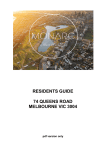
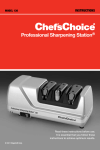
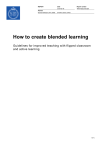

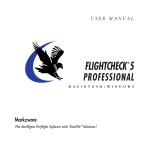
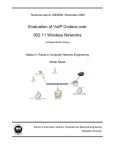

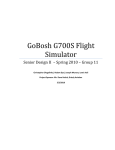
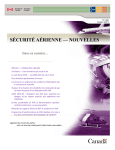
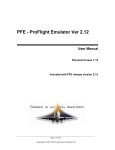
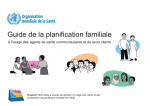
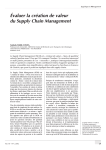

![Minium Citabria_P001 [Konvertiert]](http://vs1.manualzilla.com/store/data/006585447_3-fe7b6db82b655e204f379c9d210cf94d-150x150.png)
